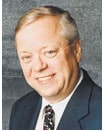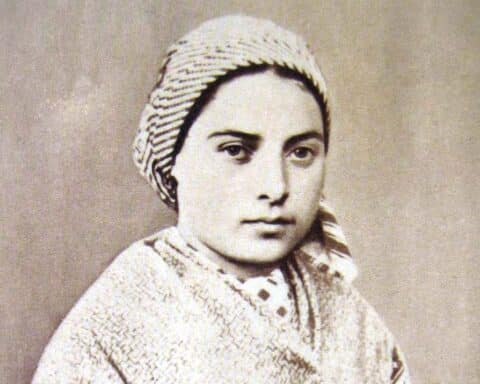
Duriga, former associate editor of Our Sunday Visitor, explains in the preface that his very name — Augustus Tolton — is a bit of a mystery. In his baptismal record in 1854, the local church identified him only as “a slave child.” By his confirmation, he was known as “August,” but there’s little explanation where it came from.
As to the last name, Duriga explains that slaves had no such names. The last name “Tolton” also appeared first in his confirmation record but, as Duriga writes, “no documentation exists as to where that last name originated.”
No first name. No last name. This was the world of Father Augustus Tolton, who could possibly become the next canonized American-born male saint.
He would join the company of Father Solanus Casey, a Capuchin priest who counseled and ministered to thousands up to his death in 1957; Father Stanley Rother, a martyred Oklahoma priest shot in the head in 1981 while serving the poor in Guatemala; and De La Salle Christian Brother James Miller, who was also shot to death in Guatemala in 1982, and was recently recognized a martyr by Pope Francis.
The experience of black America in the second half of the 19th century is the ever-present backdrop to this marvelous book. In “Augustus Tolton: The Church Is the True Liberator,” (Liturgical Press, $14.95), Duriga presents a great read and a life heroically lived.
Father Tolton was born in Missouri in 1854. His mother escaped the plantation to Quincy, Illinois, in 1863 during the Civil War. Enrolled at 14 in a local Catholic school, he was confirmed in 1870.
In 1878 he started a ministry to black Americans in Quincy and two years later went to Rome to study for the priesthood at Urban College, which trained candidates for the missions. But Cardinal Giovanni Simeoni, prefect of the Congregation for the Propagation of the Faith, announced he would be sent back home after ordination. “America has been called the most enlightened nation. We shall see if it deserves the honor,” Cardinal Simeoni said.
Ordained in Rome on April 24, 1886, and assigned back to Quincy, he moved to Chicago in 1889 and hoped to make St. Monica Church, founded in a basement and dedicated in 1894, a center for black evangelization. St. Monica would become the first church for black Americans west of Baltimore. Father Tolton died unexpectedly at age 43, on July 9, 1897.
Father Tolton saw in his time in Rome a Church that did not recognize racial barriers. The sacraments, the priesthood, salvation and the life of the Church had no relation to skin color. That would be the center of Father Tolton’s faith and his message to black America.
His life was not lived out in good times. Born in slavery, it would end just as the Supreme Court accepted “separate but equal” as legalized racial segregation that would define black America for decades. Lynching was spreading.
Father Tolton did not see his role as a zealot or a crusader. As Duriga portrays him, Father Tolton saw his Catholic faith as the true hope — the true liberator — for black America. And white America. Not politics.
Outside of Chicago, outside the black Catholic community, Father Tolton’s name might not be well known yet. But his story is one of deep love for the Faith and a priest driven by the need to share it. Enjoy his courageous story. And spread the word.
Robert P. Lockwood writes from Indiana.





